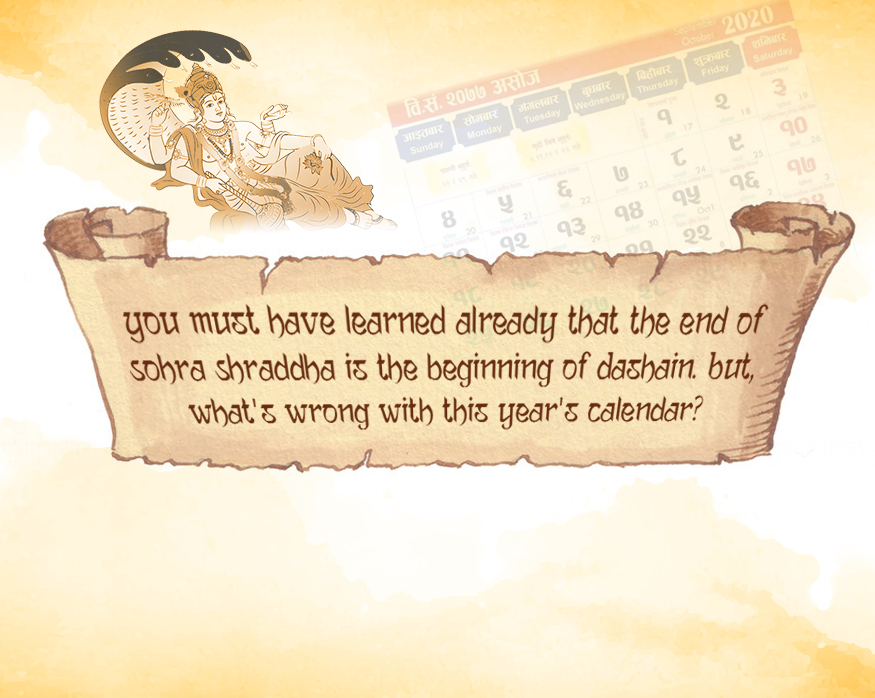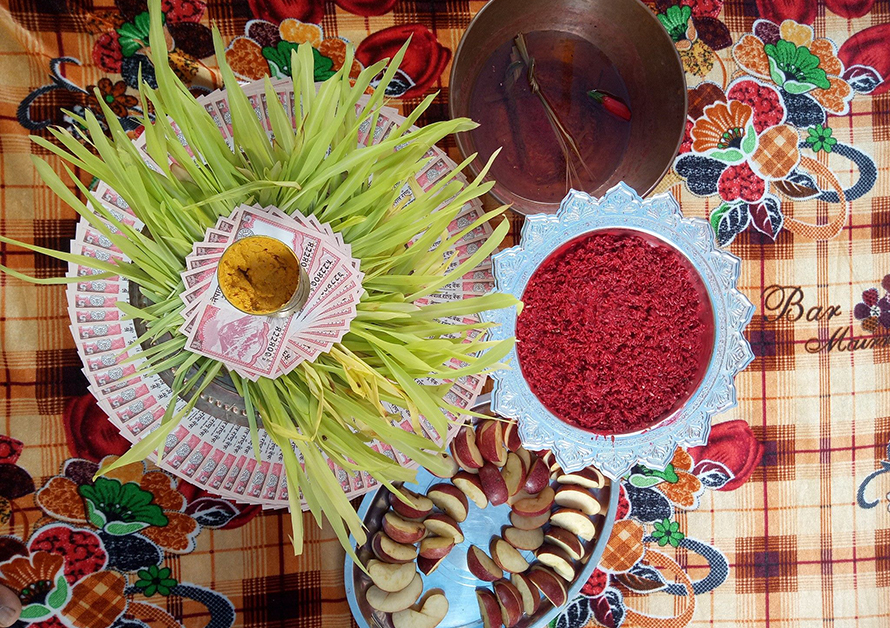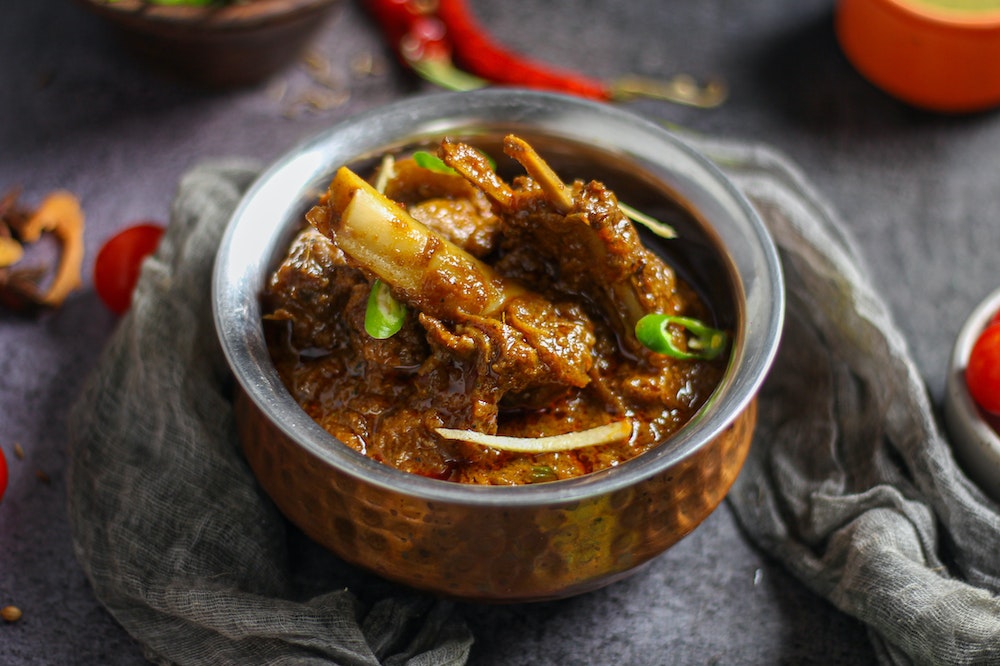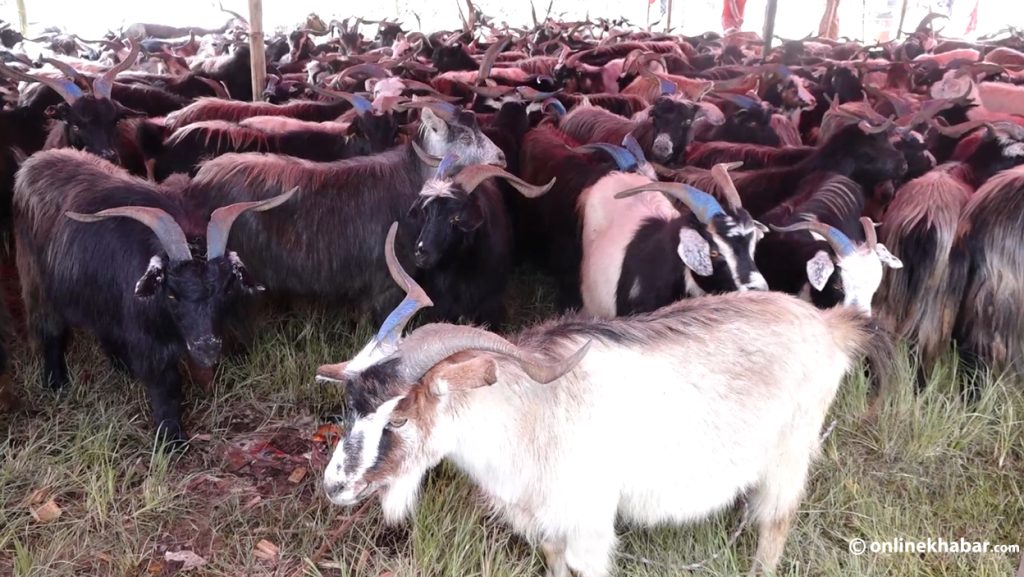Thirteen months in a year? Ever heard about it?
Most probably you would say no. But, why is there a gap of a whole month between the end of Sohra Shraddha (Pitri Paksha) and Dashain (Durga Paksha) this year? You must have learned already that the end of Sohra Shraddha is the beginning of Dashain. But, what’s wrong with this year’s calendar?
The answer to this question is: there falls an ‘extra’ (‘thirteenth’) month this year between Pitri Paksha and Durga Paksha.
Only a few people may have heard about the extra month that comes around every 32 months as per the Hindu lunar calendar system that is based on the cycles of the moon.
But, what is this extra month that people call a ‘Mala Maas’, ‘Adhik Maas’ or ‘Purushottam Maas’? How can there be thirteen months in a year? What is the scientific or astrological calculation behind this system? Does this month have any religious significance?
What is a Mala Maas?
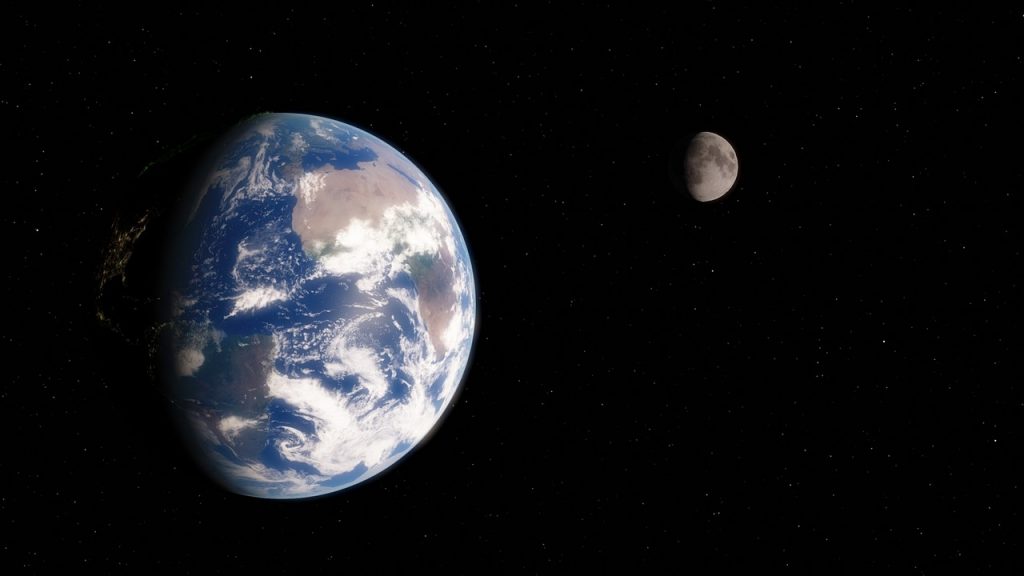
Astrologer Basudev Krishna Shastri explains, “The month that does not have a Surya Sankranti (the transition of the sun from one zodiac or rashi to another) is generally known as Mala Maas. Usually, every lunar month has one Surya Sankranti. However, in Mala Maas, the sun does not transmigrate into another zodiac and keeps moving within the same zodiac.”
This year, Mala Maas starts Friday, September 18, and will conclude on October 16. As the ‘solar’ month of Ashwin continues throughout, there is not any Surya Sankranti in between. As per the Hindu lunar calendar, in such cases, there is an Adhik (extra) month in between the first half (Krishna Paksha/ waning phase of the moon) and the second half (Shukla Paksha/waxing phase of the moon).
Shastri describes the astrological calculation behind the occurrence of this extra month, “As per our calendar system, a lunar month is about 29.53-day long and adding all 12 lunar months makes a lunar year about 354-day long whereas the total days in one solar year is about 365 days.” It means, there are around 11 extra days every solar year. In around three years, it approximates to becoming one month. “Therefore, to balance this gap between these two calendars, this extra month is added to the lunar calendar around every 32 months.”
The ‘impure’ month, made holy
Such an occurrence has different names for different people. Some people call it ‘Mala Maas’ whereas for others, it is an ‘Adhik Maas’ or ‘Purushottam Maas’.
Because this month is made after accumulating the ‘leftover’ days (also regarded as ‘Mala’ meaning unclean or impure or waste), this month got its name Mala Maas, according to Shastri. Therefore, during this month, it is deemed inauspicious to conduct a wedding, rice-feeding, bratabandha, griha pravesh, and other special ceremonies during this month. Also, no new work should be started this month, it is believed.
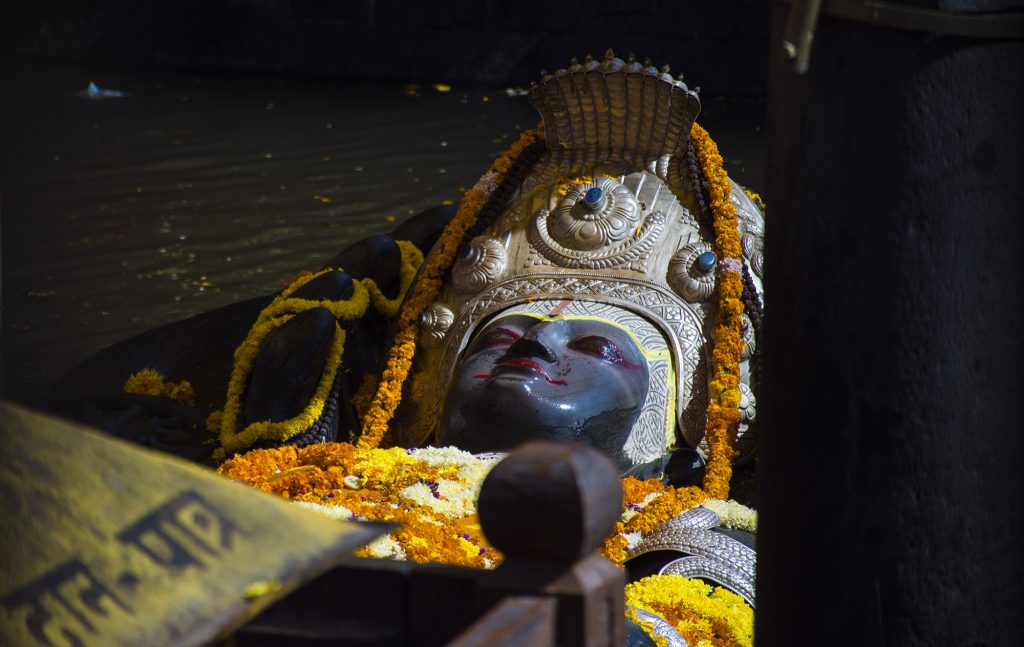
In short, Shastri briefs that the ceremonies, pujas and other functions that are conducted as per the lunar calendar system are considered inauspicious during this month.
But, this ‘impure’ month also has a holy name of Purushottam Maas. Rishiram Pokharel, a noted Sanskrit literature scholar of the country, narrates the story of how this month got its new name. “Every lunar month has Sankranti and each month is assigned to one diety. As this month was deemed as ‘mala’ (waste or impure), everyone disapproved of this month. No diety or demigod agreed to become the god of this month. Then, this month approached Lord Vishnu, and listening to this month’s plight and misery, Lord Vishnu took pity on the month. And then, he assigned himself to this month. Since then, this month is named Purusottam Mahina or Purusottam Maas.”
Religious significance
After getting its name Purusottam Mahina from Lord Vishnu, this month is treated as a holy and special time for worshipping Lord Purusottam (Vishnu). During this month, a fair is organised in Machhegaun in Kathmandu, Nepal. The fair is renowned as Matsyanarayan Mela. Devotees visit the Matsyanarayan Temple and take a bath in the pond at the temple with the belief that this will take away all their sins and grants them with virtues.
Also, according to both Pokharel and Shastri, there is the special significance of donating/offering a special dessert named ‘Malpuwa’ this month.
They assert that offering 33 malpuwas in the last day of Purusottam Maas is equivalent to offering the whole world and the one who does that will get the punya (virtues) of offering the whole world.
Lord Purushottam is worshipped during this whole month. Devotees recite and listen to Purusottam Mahatmya (a holy scripture) this month. They take vrats (fasting), chant mantras, carry out yagyas, perform Lord Purusottam Pujas, and recite Shrimat Bhagwat Purana, Shri Vishnu Puran and other Purusottam Granthas in their homes or in the temples. It is believed if one worships Purosottam during this month, Lord Vishnu will bless the devotees with all the virtues, happiness, health, and prosperity and also takes away all their sins.
But again, you will have to wait for one more month to get the Dashain feeling this year!



